#nova
Junkyard Find: 1977 Buick Skylark Sedan
Starting with the 1962 model year, GM sold cars on the new compact rear-wheel-drive X Platform (thus dooming the Corvair long before Ralph Nader had any say in the matter). In the United States, these cars were Chevrolet Chevy IIs and Novas; north of the border, they were Acadians. Eventually, the platform got bigger and the other GM car divisions jumped in for a piece of the action. Buick sold these cars from the 1973 through 1979 model years, and I've found one of those Buickized Novas in a boneyard near Reno, Nevada.
Rare Rides: The 1987 Chevrolet Nova Hatchback, the All-American Corolla
Today’s Rare Ride was the final iteration of the Chevrolet Nova nameplate in North America. An economy car that largely vanished from roads long ago, today’s hatchback example is very clean and very NUMMI.
Junkyard Find: 1968 Chevrolet Nova Sedan
There was a time, from the late 1960s through the late 1980s, when the third-generation Chevrolet Nova was among the most plentiful Chevrolets found on North American roads. These cars were cheap, sturdy, and fuel efficient for their time, but discarded ones are so rare now that this is the first one I have seen in a self-service wrecking yard since this ’73 hatchback in 2011.
Junkyard Find: 1986 Chevrolet Nova Sedan, Wisconsin Rust Edition
Junkyard Find: 1976 Chevrolet Nova
I see many Corolla-based, NUMMI-built Novas in my junkyard travels, but the earlier rear-wheel-drive X-body Nova has become a fairly rare sight in self-service wrecking yards during the last decade or so. Other than a handful of factory-performance versions, 1970s Novas were disposable, cheap transportation appliances, and so the ones that haven’t been crushed by now tend to be nicely restored and/or drag racers. Still, I find a few; we’ve seen this ’77 two-door, this rare ’73 hatchback, this ’79 Oldsmobile Omega (one of GM’s many adventures in X-body badge engineering), and this ’78 Cadillac Seville Elegante (one of GM’s many adventures in Cadillac brand dilution) so far, and now we’ve got this ’76 in California.
Junkyard Find: 1988 Chevrolet Nova Sedan
For reasons that trolly shouters on both extremes of the American politico-socio-automotive spectrum know to be the truth, the exact same workers at the Fremont Assembly plant who couldn’t hammer together a decent-quality Buick Regal or GMC C/K— no matter how many Mickey’s Big Mouths they guzzled in some South Hayward parking lot before their shifts— suddenly became capable of building rebadged Corollas that were every bit as good as the ones made by their Japanese counterparts, once the plant became NUMMI (nowadays they build Teslas there). Of course, each of you knows that this is due to (insert damning indictment of those dupes who believe Wrong Things here) with a touch of (insert bilious tirade that sounds the alarm about Some Evil Conspiracy here), and to provide ammunition for your arguments I present this 1988 Chevrolet-badged AE82 Toyota Sprinter aka Corolla.
Junkyard Find: 1977 Chevrolet Nova Coupe
The fourth-generation Chevrolet Nova sold in huge numbers, wasn’t a bad car by the standards of its time, and stayed on the street in significant quantities well into the 1990s. However, the Malaise Era Nova just never gathered much of an enthusiast following compared to its predecessors— if you want to restore a Nova these days, you’ll get a ’64 or ’70, not a ’78— so the few remaining survivors go right to the scrapper when they die. Here’s a very worn-out example that I saw in California last week.
Junkyard Find: 1978 Cadillac Seville Elegante
As Aaron Severson explains in great detail in his excellent Ate Up With Motor piece, the 1976-1979 Cadillac Seville (which was essentially a Chevy Nova under the skin), accelerated the long decline of the Cadillac Division that continued with the Cavalier-based Cimarron and didn’t really turn around until Cadillac started building trucks for rappers and warlords in the 1990s. Having driven a $50 1976 Nova many thousands of miles, I can assume that ’78 Seville ownership was very similar, though with a plusher interior and (slightly) more engine power. Here’s a brown-on-gold-on-brown-on-yellow-on-ochre-on-umber-on-brown-on-beige-on-copper example that I spotted a few weeks ago in a San Francisco Bay Area wrecking yard.
A Testament To The Urealized Dreams Of My Youth
According to the clock, it would still be more than an hour before the sun slipped over the Western horizon and sank into the Pacific, but from my place behind the wheel of my 74 Nova beneath the leaden November skies and running through the steady drizzle, the dark of night was already beginning to ooze its way up and out of the hidden spaces of the great forest that lined either side of the narrow roadway. Ahead, a single mailbox loomed up and out of the mist and I checked its number against the one I had written on a small scrap of paper some hours earlier. To my satisfaction they matched and I pulled off the pavement and onto a long gravel driveway, my headlights cutting a bright swath through the increasingly murky darkness as I worked my way back into the woods.
American Graffiti – X
Way back in 1973, a relatively young and inexperienced director by the name of George Lucas made a movie that starred a whole bunch of nobodies. Called “American Graffiti,” it turned out to be the little movie that could. Co-Produced by Francis Ford Coppola and Gary Kurtz for just $775,000, it went on to become one of the most profitable films of all time, making an estimated $200 million dollars and, in the process, turned several of those “nobodies,” people like Ron Howard, Harrison Ford, Richard Dreyfus, Suzanne Summers, and Cindy Williams, into bankable stars. In 1995, the National Library of Congress declared it to be “culturally, historically and aesthetically significant” and selected it for preservation by adding it to the National Film Registry.
For those of you who haven’t seen it, I won’t ruin the story by revealing any of the finer points of the plot. Generally speaking, it is the story of teenage angst and antics set amid classic cars and punctuated by great old-time rock and roll music and the action follows several teens on a hot August night in the far away year of 1962 as they cruise their cars around the California town of Modesto in search of action and adventure. The movie hit theaters just as the first wave of the baby boom generation, people born between 1946 and 64, began to close-in on the ripe old age of 30 and to see it now is to look back upon the days of their youth through the rose colored glasses of nostalgia.
One Last Summer in the Sun: The Final Days of a Chevy Nova
The forest green 1969 Nova sat unwashed and unloved at the side of the modest house. I studied it from the side of the road with the eye of an experienced hunter and I recognized the signs. Shunted off to the side while two more modern cars sat in the driveway, it was obvious that the old Nova had already passed that threshold of usefulness and begun the descent into eventual abandonment. The grass beneath the car, just a cutting or two taller than the rest of the yard, told me how recently that had been – just a few weeks. There was a chance then, that the car had not sat long enough to totally degrade. Perhaps, I thought, there was still some value to be had.
My Role In The Extinction Of The American Muscle Car
1969 Chevelle SS
A few weeks a go I had the opportunity to watch part of the Barrett Jackson auction. I found myself captivated by the colorful commentary that went along with each sale. Every car had a story and the commentators spent a great deal of time telling us about them. They also discussed the cars’ performance, available options and recited the original production numbers, contrasted by telling us exactly how many of those cars survive today. It turns out that many of the cars I regularly used to see back in the 1970s are extremely rare today. I suppose I shouldn’t be surprised, however, after all, I had a hand in making them go away.
Junkyard Find: 1987 Chevrolet Nova Sedan
The fifth-gen Chevy Nova was built at California’s NUMMI plant for the 1985 through 1988 model years, prior to becoming the Geo and then the Chevrolet Prizm. The Nova was really a rebadged AE82 Corolla, and so most of them managed to survive into the turn of the 21st century. By now, however, a NUMMI Nova is a rare sight; we saw a trustifarian ’87 hatchback in California last winter, and now this well-preserved sedan has appeared in a Denver self-service yard.
Junkyard Find: 1987 Chevrolet Nova
When the GM Fremont Assembly plant took on Toyota managers and became NUMMI in 1984, the same supposedly inept lineworkers who hammered together sub-par Buick Apollos suddenly started building Corollas that were at least as well-made as the ones made by their Japanese counterparts (you are free to draw your own conclusions about GM management in the 1980s). The initial round of GM-badged Corollas were given the Chevrolet Nova name, prior to becoming the Geo Prizm; you still see Prizms around, but the 80s Nova has become a rare sight on the streets and in the junkyards. Here’s a Nova I spotted in an Oakland, California, self-serve yard earlier in the month.
Junkyard Find: 1973 Chevrolet Nova Hatchback
Remember the early Nova hatchbacks? They didn’t sell very well, probably because the hatch cost $150 more ( $810 in 2011 dollars) than the Nova coupe with a traditional trunk. I can’t remember the last time I saw one, and I wouldn’t have noticed this one in my local self-service yard, had it not been for the sharp eyes of the Tetanus Neon LeMons team co-captains, visiting Denver from Houston and stopping at the junkyard on their way to the airport for some Neon throttle-body shopping.



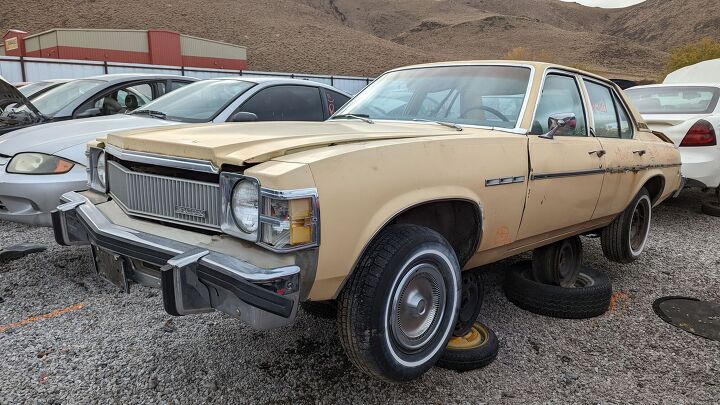
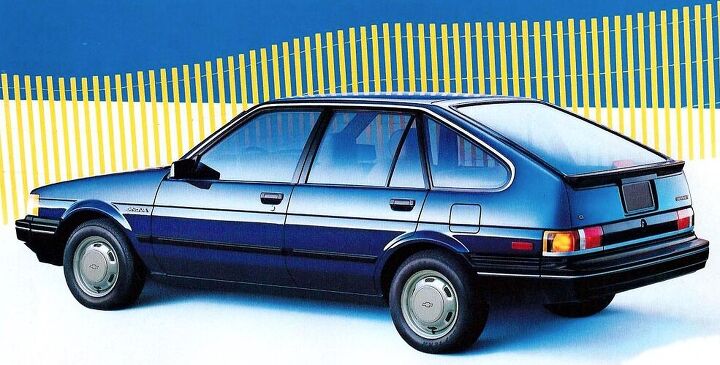
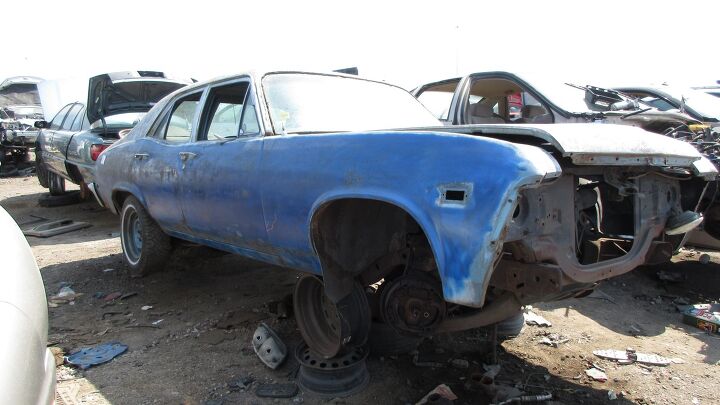
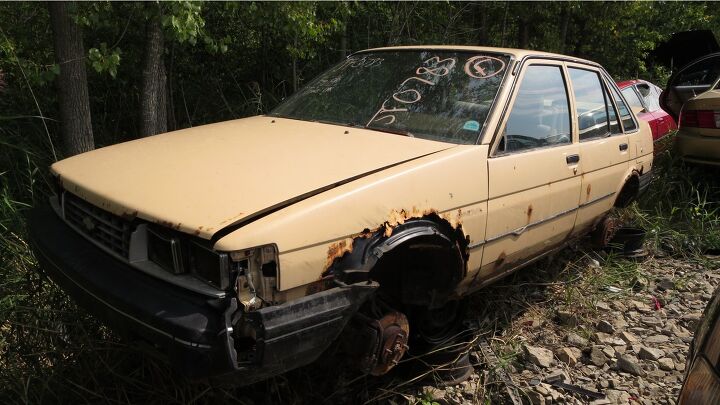
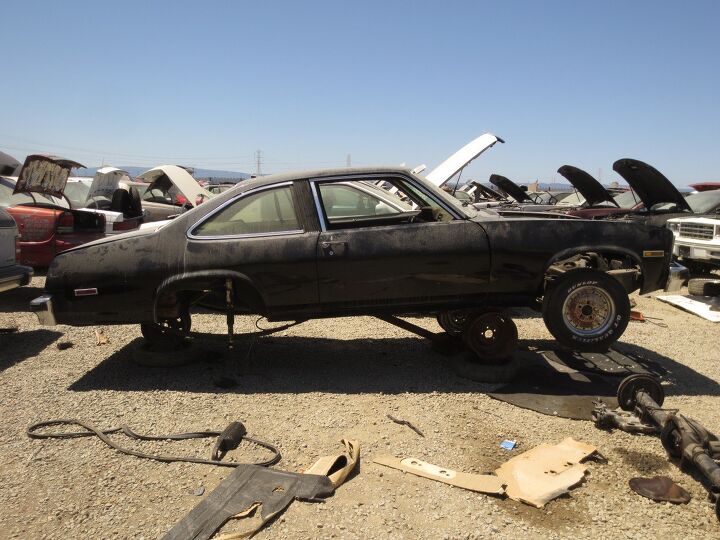
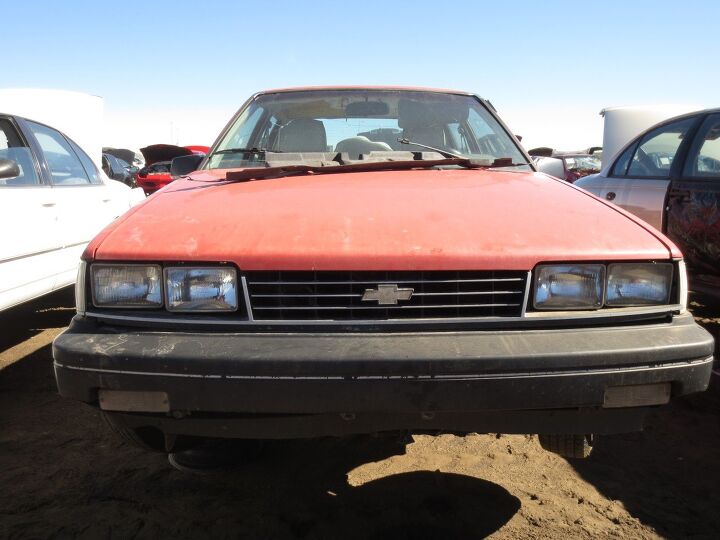
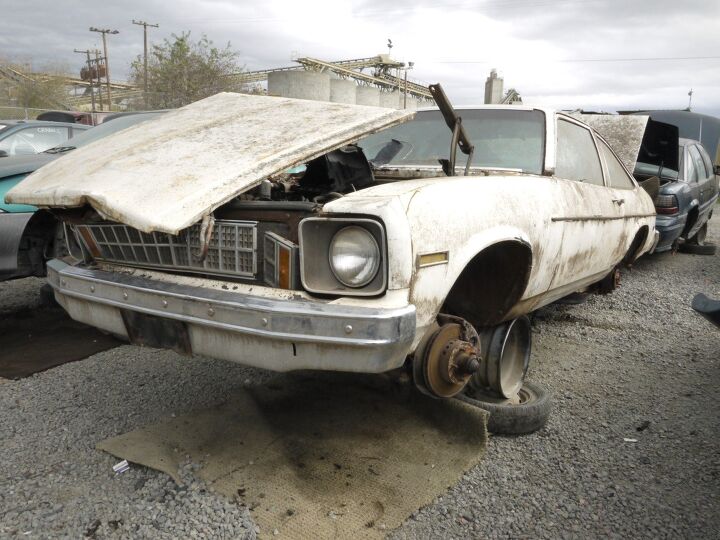
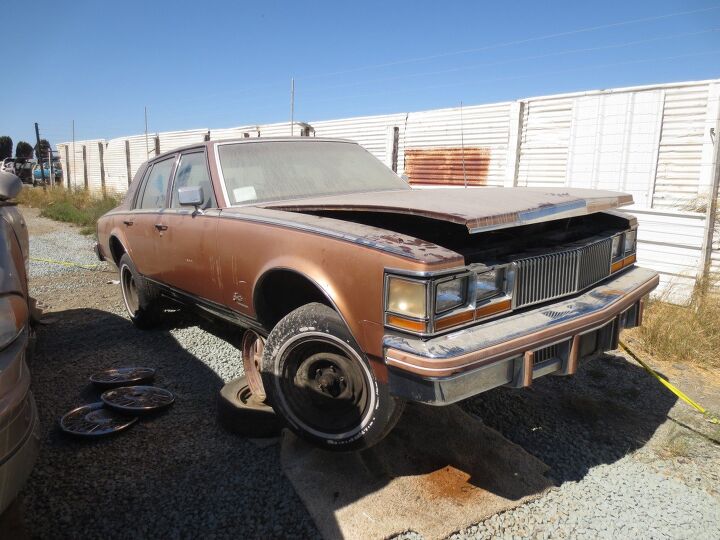

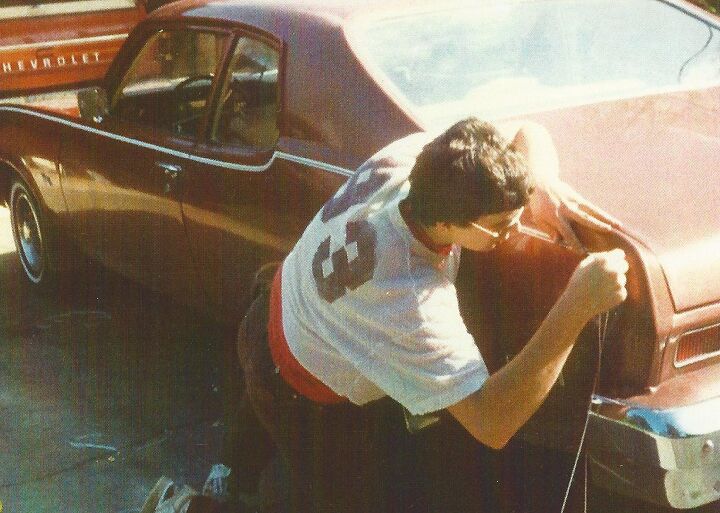
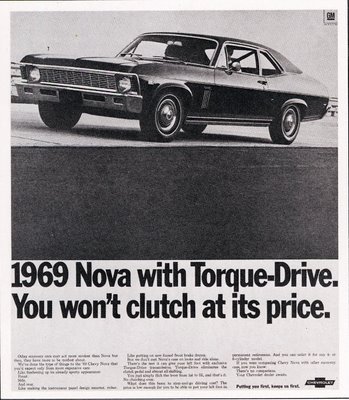

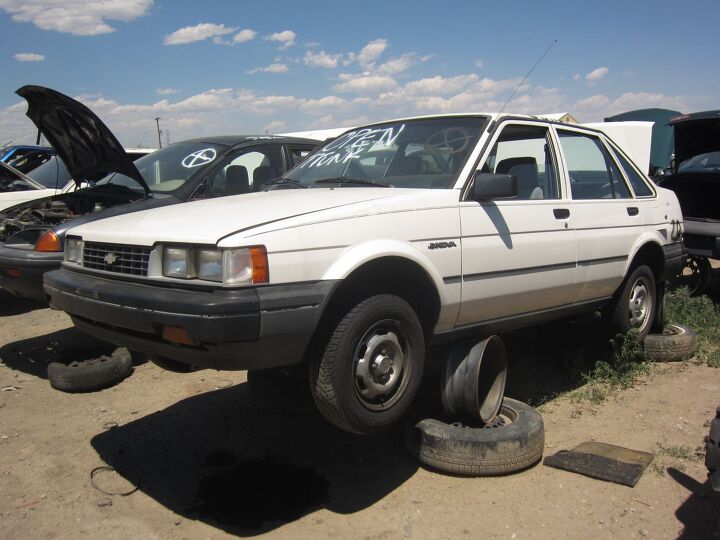
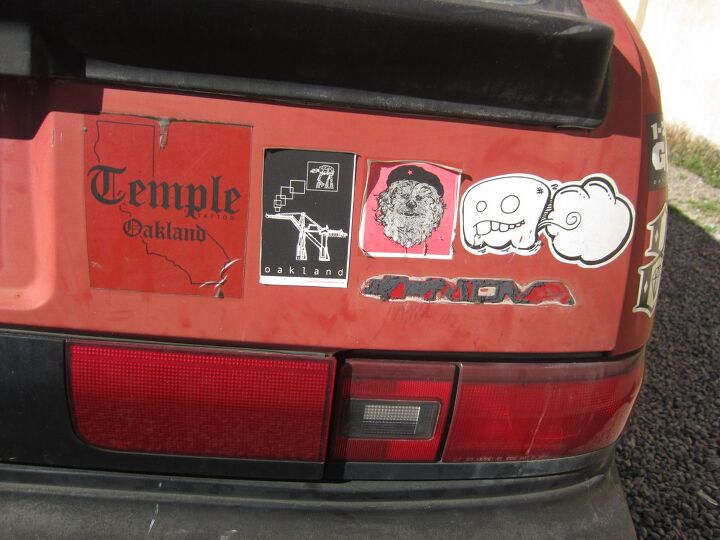












Recent Comments